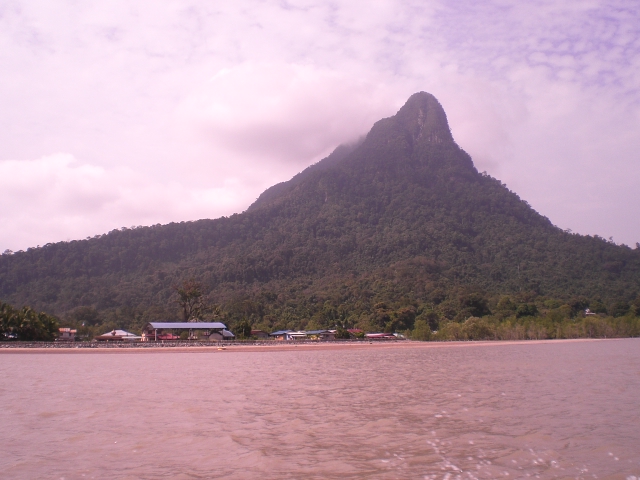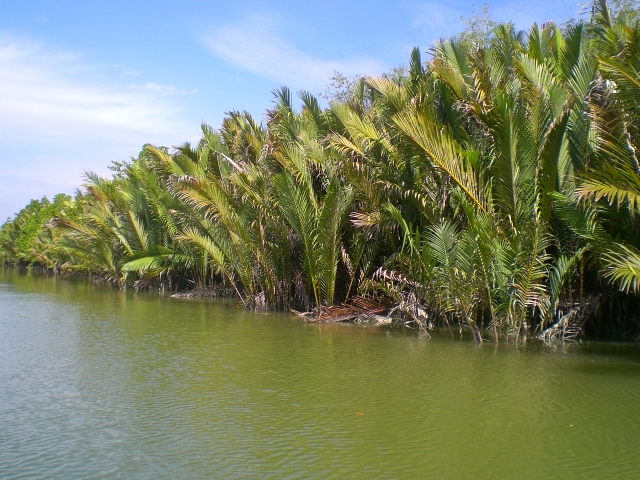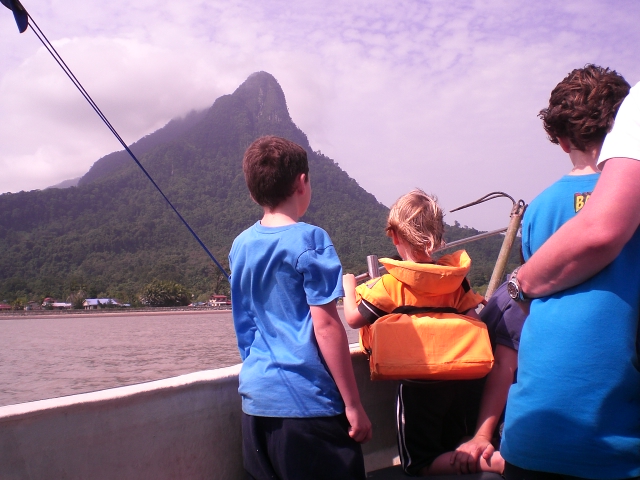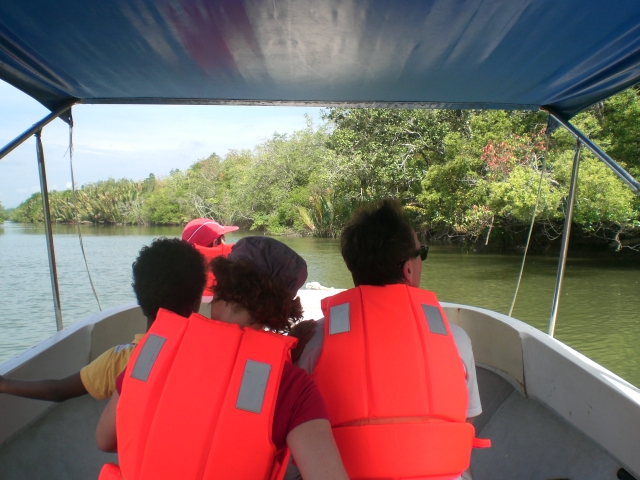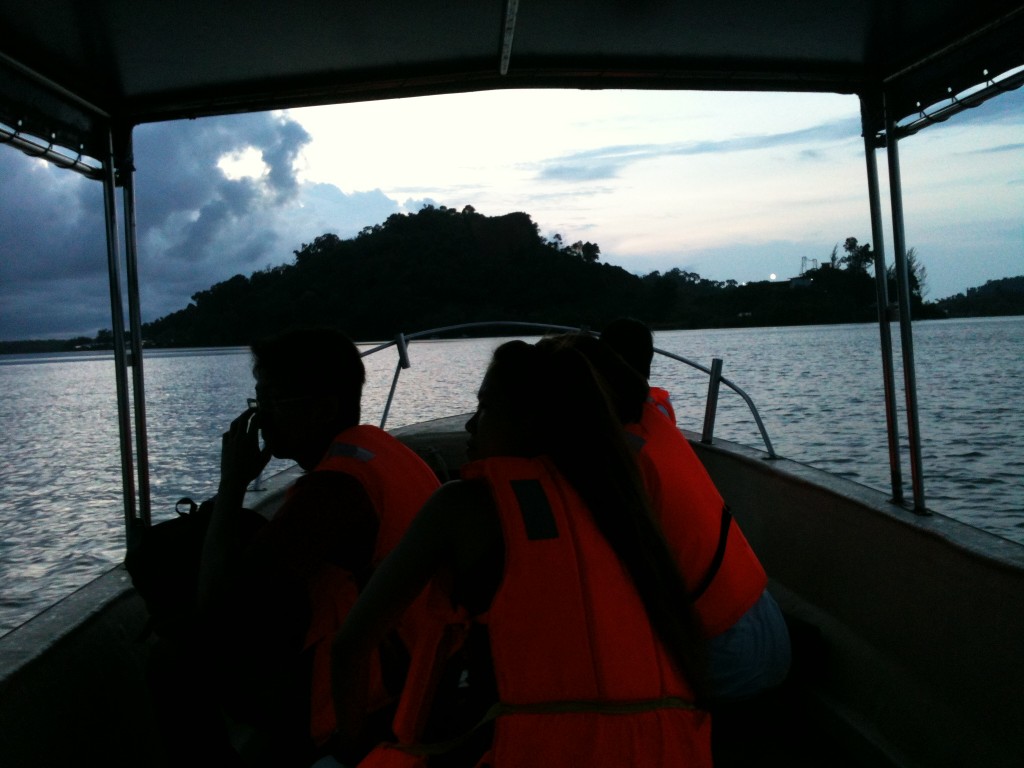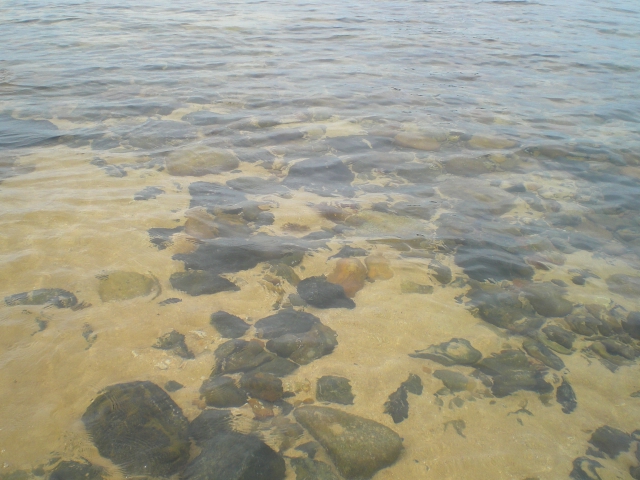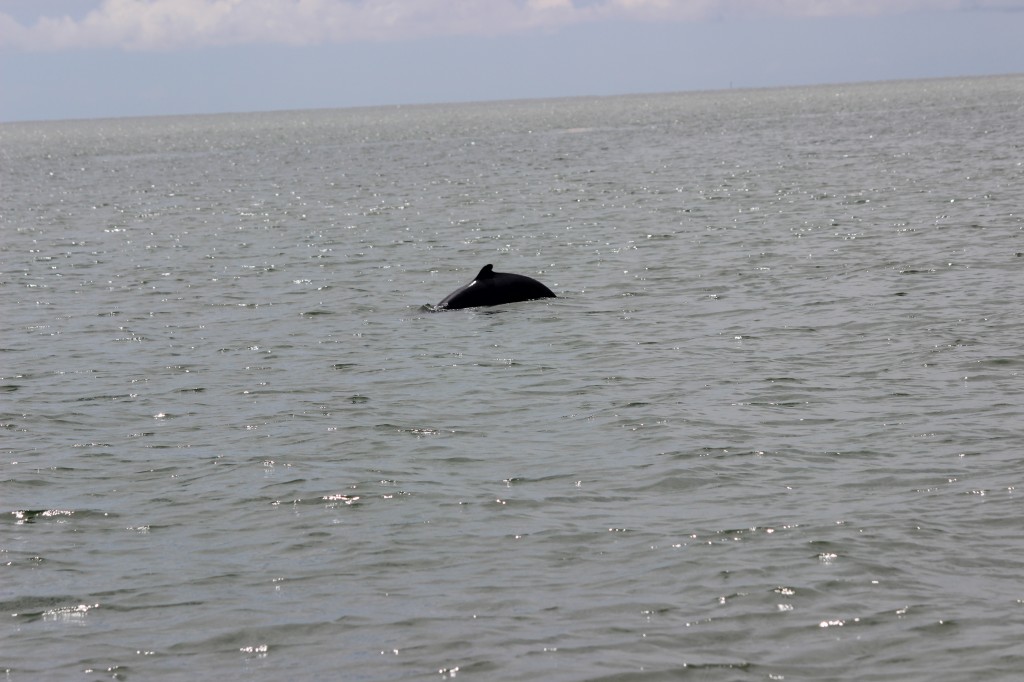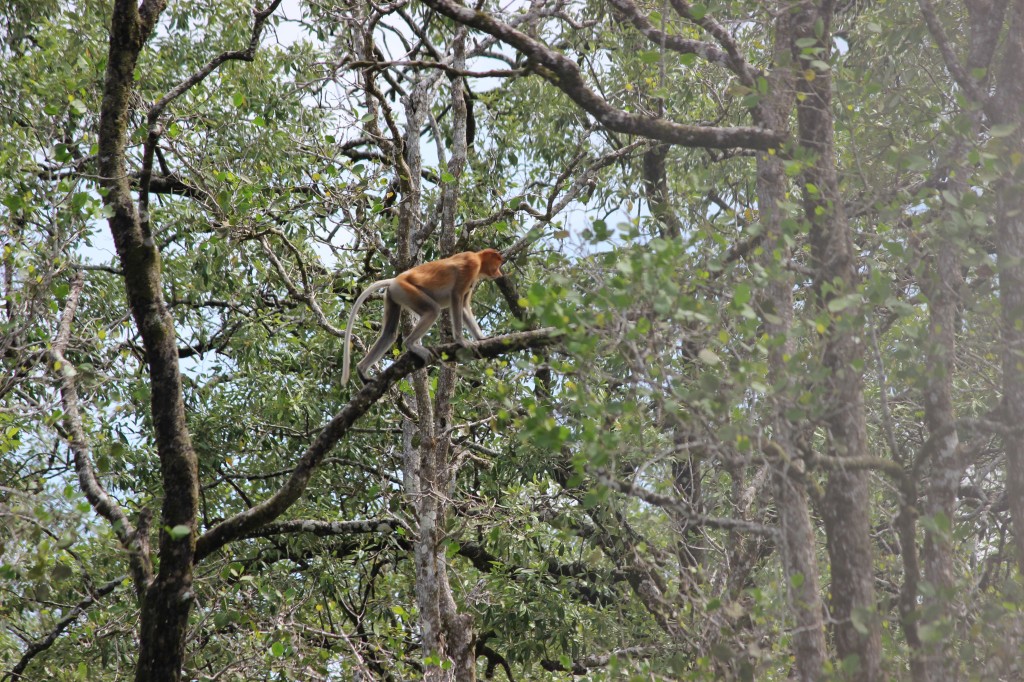The sea off Santubong peninsula, just a 45 minutes drive north of Kuching city, is an exceptionally scenic place due in part to the backdrop of the majestic Gunung (Mount) Santubong and its unique shoreline of mangrove swamp forest and wetland. Though not having a craggy coastline, it has several islands, notably Pulau Satang Besar and Pulau Satang Kecil, where there are some nice sandy beaches and a few rocky outcrop that serve as roosting stops for many birds.
Several rivers, notably the Santubong River and Batang Salak pour their silt laden water into the estuary. There are several picturesque Malay fishing villages lining the shore, most famous of course is Kampung Santubong, then the nearby Kpg Pasir Pandak, Kpg Pasir Panjang, Kpg Salak and further to the west, Kpg Telaga Air. It is usually from the village of Santubong that the cruise to watch dolphins, wildlife spotting at the wetland, are launched.
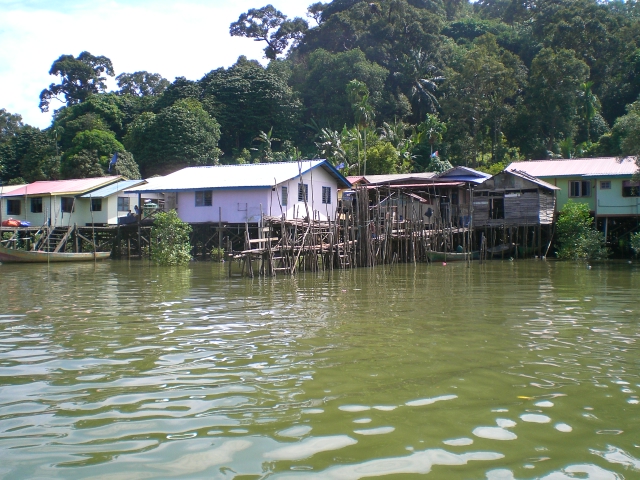
Kampung Salak, a traditional Malay fishing village on stilts, is an interesting study on the livelihood of the coastal people.
Trips from the jetty of Santubong usually start at 8.00 -9.00am. Usually a fiberglass boat with cover is used with powerful 40-horsepower outboard engine. As the boat roars toward the sea, the view of the majestic Mt Santubong is most breathtaking, with its sharp peak jabbing at the sky and the occasional clouds at 810 metres.
As the boat moves out to the sea, the boatman with his years of experience, will cut off or slow down the engine at a few certain spots in the estuary, for he knows these are the usual spots where the elusive Irrawaddy dolphins will surface. Keenly watching the surface of the water, he will suddenly call out in a low voice : “3 o’clock” or “”11 o’clock” and so on, to indicate the directions instead of pointing, as the moments dolphins surface are fleeting, a split second too slow, and you will have to wait for another turn! Binoculars and camera zoom lenses are definitely useful tools to bring along for this activity.
After the dolphin watch, the boatman will steer towards into the estuary of the Batang Salak, where a picturesque Malay fishing village, Kpg Salak is sited. With its typical stilted houses by the seashore, this is the keen photographer’s favourite shots. Soon the boatman will move into a smaller river with heavy nipah palm trees lining both the river banks. Depending on the tide condition, in low tide, the mud flats may lurk some estuarine crocodiles. Some times a lone brahminy kite (eagle) may be seen soaring in the bright sunlit sky.
Some agency have a firefly tour, this is also in the mangrove swamp area, but it is a sunset cruise when the day turns to night, with the boat chugging slowly by the river banks almost touching the low branches of the mangrove trees. Scores of magical fireflies flitting and some resting on the tree branches, some may accidentally fly into the boat! It is possible to catch the insect and observe their brightly lit torsos.
Another interesting animals may be observed at the river edge of the wetland – the rare and comical proboscis monkeys. But sighting of this primate is largely a pot-luck affair, however with an experienced boatman, chances is definitely higher as he knows almost to the exact trees along the river that these monkeys appear. They usually hang around up in the trees, so again binoculars are useful here.
If time permits, a trip in this estuary should include a visit to the Satang Island, a government sponsored sanctuary for the rare Green and hawksbill turtles. However do note that egg laying season is usually between April and August and hatching of the eggs only hatch after 45 days incubation period. If a visitor is in luck, he may see baby turtle in the hatchery, under the care of Park wardens, before they are released into the sea under the cover of darkness, to increase their chance of survival. A minuscule percentage of the baby turtles survive the rigour of the sea and ocean to maturity, and the amazing fact is that they will come back to the very island, and the very beach where they were born, to lay their eggs, after a lifetime of roaming the seas and ocean thousands of miles away!
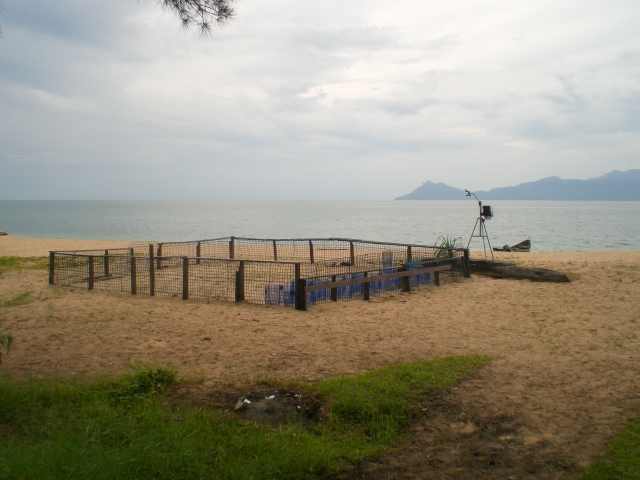
Pulau Satang Besar – the turtle hatchery enclosure erected by the park warden. Incubation is usually 45-60 days, when hatched, baby turtles are taken care of by the wardens and only released to the sea at night to avoid predators.
The island of Satang may book small in the distance, but once you land on its beach, it is anything but small. There are fine clean beach with swaying coconut trees and jungle in the backdrop. A Forestry Department quarter manned by several park wardens will collect the entrance fee from you. There is also an “Owner’s fee” to pay, the island being a private property purportedly bequeathed to a Malay family and their descendants, by either the Sultan of Brunei or the White Rajah. A plaque, proudly put up on the beach near the park HQ proclaims this ownership.
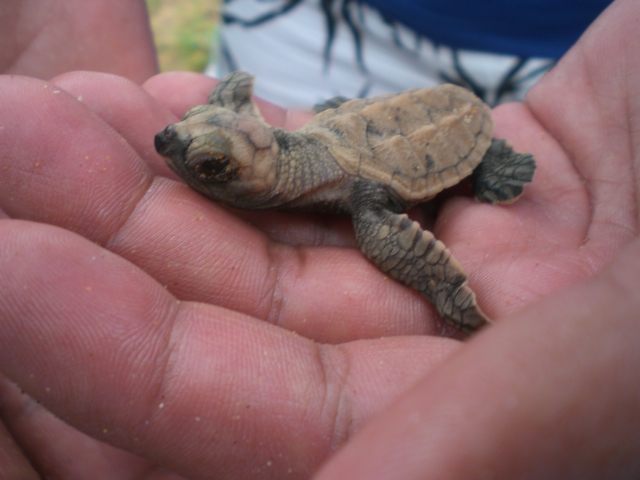
Day-old baby turtle found on Satang island, being held for safe-keeping by the warden until its release to the sea.
On a clear sunny day, snorkeling is possible in the clear water of the island, however not much marine life can be observed on the shallow seabed. Unfortunately Sarawak is not in the league of the likes of Sipadan, or Pulan Tioman when it comes to diving or snorkeling. At least not yet.
A day out at sea is usually hot, even on cloudy days, so bring along plenty of drinking water, and since there’s no food shops, pack your own lunch! Other absolute essentials are: sun lotion, insect repellant, wide brim sun hat and sun glasses.
